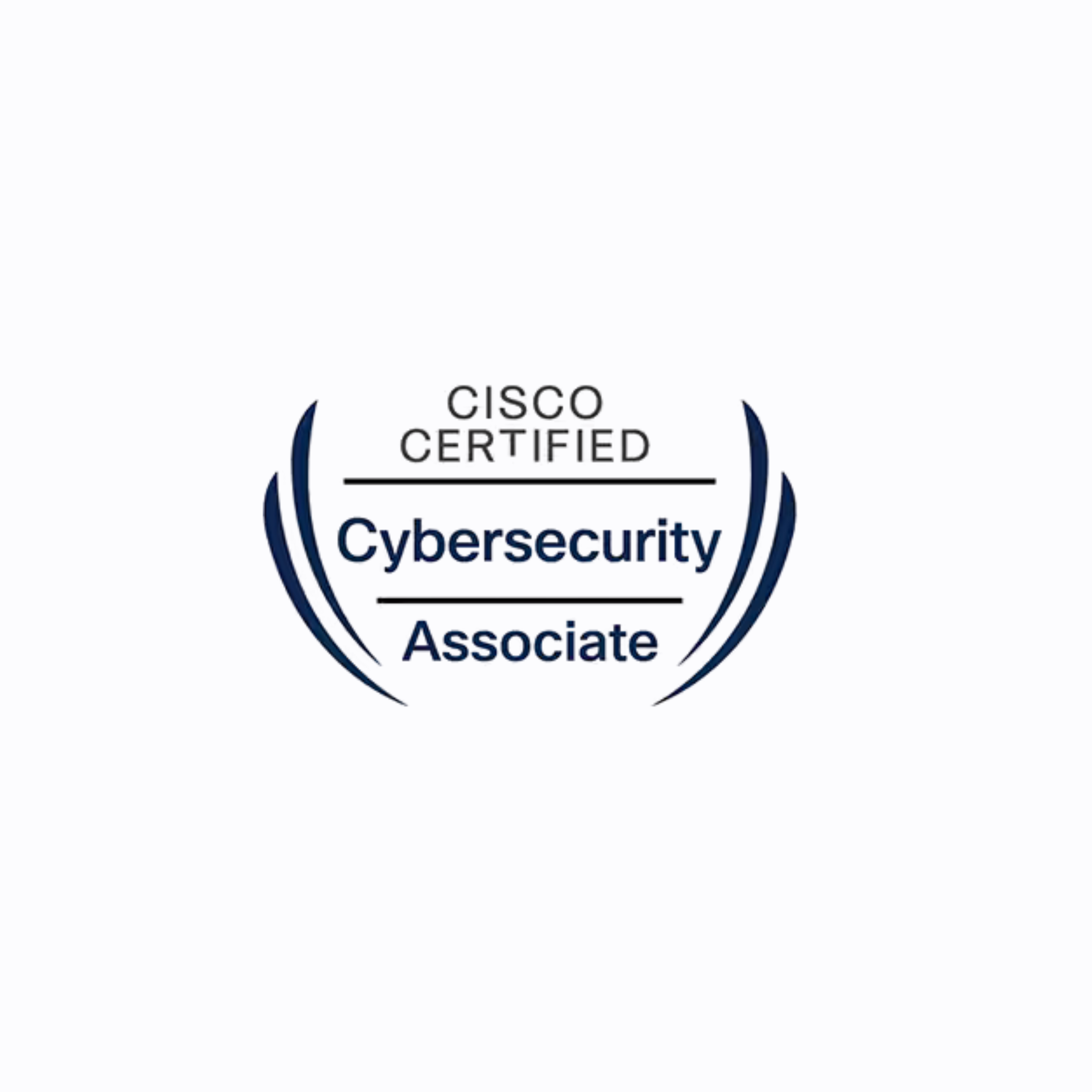
About Course
Cisco Certified CyberOps Associate Course Overview
The Cisco Certified CyberOps Associate certification focuses on cybersecurity operations, security monitoring, and incident response. It is designed for entry-level cybersecurity professionals aiming to work in a Security Operations Center (SOC).
Module 1. The Danger
- Introduction
- War Stories
- Threat Actors
- Threat Impact
- The Danger Summary
Module 2. Fighters in the War Against
- Cybercrime
- The Modern Security Operations Center
- Becoming a Defender
- Fighters in the War Against Cybercrime
- Summary
Module 3. The Windows Operating
- System
- Windows History
- Windows Architecture and Operations
- Windows Configuration and Monitoring
- Windows Security
- The Windows Operating System Summary
Module 4. Linux Overview
- Linux Basics
- Working in the Linux Shell
- Linux Servers and Clients
- Basic Server Administration
- The Linux File System
- Working with the Linux GUI
- Working on a Linux Host
- Linux Basics Summary
Module 5. Network Protocols
- Network Communication Process
- Communication Protocols
- Data Encapsulation
- Network Protocols Summary
Module 6. Ethernet and Internet Protocol
- (IP)
- Ethernet
- IPv4
- IP Addressing Basics
- Types of IPv4 Addresses
- The Default Gateway
- IPv6 Prefix Length
- Ethernet and IP Protocol Summary
Module 7. Principles of Network Security
- ICMP
- Ping and Traceroute Utilities
- Connectivity Verification Summary
Module 8. Address Resolution Protocol
- MAC and IP
- ARP
- ARP Issues
- Address Resolution Protocol Summary
Module 9. The Transport Layer
- Transport Layer Characteristics
- Transport Layer Session Establishment
- Transport Layer Reliability
- The Transport Layer Summary
Module 10. Network Services
- DHCP
- DNS
- NAT
- File Transfer and Sharing Services
- HTTP
- Network Services Summary
Module 11. Network Communication
- Devices
- Network Devices
- Wireless Communications
- Network Communication Devices Summary
Module 12. Network Security Infrastructure
- Network Topologies
- Security Devices
- Security Services
- Network Security Infrastructure Summary
Module 13. Attackers and Their Tools
- Who is Attacking Our Network?
- Threat Actor Tools
- Attackers and Their Tools Summary
Module 14. Common Threats and Attacks
- Malware
- Common Network Attacks – Reconnaissance, Access, and Social Engineering
- Network Attacks – Denial of Service, Buffer
- Overflows, and Evasion
- Common Threats and Attacks Summary
Module 15. Observing Network Operation
- Introduction to Network Monitoring
- Introduction to Network Monitoring Tools
- Network Monitoring and Tools Summary
Module 16. Attacking the Foundation
- IP PDU Details
- IP Vulnerabilities
- TCP and UDP Vulnerabilities
- Attacking the Foundation Summary
Module 17. Attacking What We Do
- IP Services
- Enterprise Services
- Attacking What We Do Summary
Module 18. Understanding Defense
- Defense-in-Depth
- Security Policies, Regulations, and Standards
- Understanding Defense Summary
Module 19. Access Control
- Access Control Concepts
- AAA usage and operation
- Access Control Summary
Module 20. Threat Intelligence
- Information Sources
- Threat Intelligence Services
- Threat Intelligence Summary
Module 21. Cryptography
- Integrity and Authenticity
- Confidentiality
- Public Key Cryptography
- Authorities and the PKI Trust System
- Applications and Impacts of Cryptography
- Cryptography Summary
Module 22. Endpoint Protection
- Antimalware Protection
- Host-based Intrusion Prevention
- Application Security
- Endpoint Protection Summary
Module 23. Endpoint Vulnerability Assessment
- Network and Server Profiling
- Common Vulnerability Scoring System (CVSS)
- Secure Device Management
- Information Security Management
- Systems
- Endpoint Vulnerability Assessment Summary
Module 24. Technologies and Protocols
- Monitoring Common Protocols
- Security Technologies
- Technologies and Protocols Summary
Module 25. Network Security Data
- Types of Security Data
- End Device Logs
- Network Logs
- Network Security Data Summary
Module 26. Evaluating Alerts
- Source of Alerts
- Overview of Alert Evaluation
- Evaluating Alerts Summary
Module 27. Working with Network Security Data
- A Common Data Platform
- Investigating Network Data
- Enhancing the Work of the Cybersecurity Analyst
- Working with Network Security Data Summary
Module 28. Digital Forensics and
- Incident Analysis and Response
- Evidence Handling and Attack Attribution
- The Cyber Kill Chain
- The Diamond Model of Intrusion Analysis
- Incident Response
- Digital Forensics and Incident Analysis and
- Response Summary
- Prepare for Your Exam and Launch Your Career!
Student Ratings & Reviews

No Review Yet
